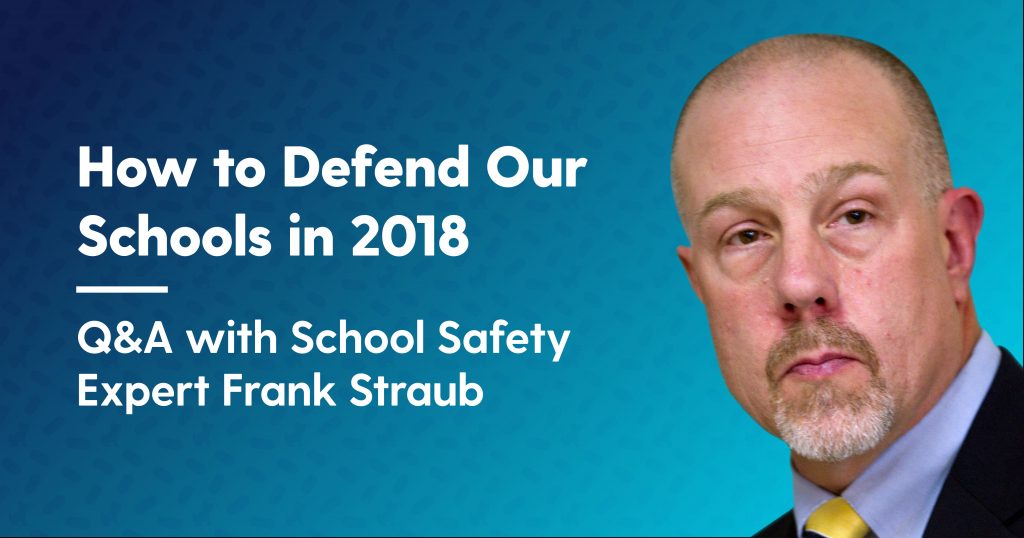
Bark sat down for an interview with Frank Straub, Ph.D., to talk about the current state of school safety in America, along with common misconceptions and ways to improve security.
Dr. Straub is the Director of the Center for Mass Violence Response Studies at the Police Foundation, a nonprofit organization that studies ways to improve policing in the United States.
He has also directed in-depth studies of the San Bernardino terrorist attack, the Kalamazoo mass shooting, and the Orlando Pulse nightclub shooting. He is currently leading a review of the Marjory Stoneman Douglas High School shooting in Parkland, Florida.
Dr. Straub is a 30-year veteran of federal and local law enforcement, and his expertise is without peer. He has testified before Congress, participated in White House convenings, and spoken at national conferences.
Q: What’s the most important thing that schools should know about mass shooting situations?
A: School shootings are devastating, and it’s imperative that schools, parents, and law enforcement work collaboratively to ensure safe learning environments. Here are a few key things schools can do to improve safety:
- Threat assessment teams should be in place so that school administrators, teachers, mental health professionals, law enforcement, and others can work together to identify youth in need of support, mentoring, and services.
- Anonymous reporting systems should be implemented on the principles of “see something, say something, do something."
- Emergency plans should be created for any potential natural and man-made safety events. These plans should be strengthened through collaboration between school officials, public safety personnel — police, fire, and EMS — and parents.
- School resource officers are crucial to helping cement school safety. If staffing doesn’t allow for a dedicated school resource officer program, then law enforcement agencies should ensure that officers are frequently in and around local school facilities, and that they are familiar with schools in their patrol areas.
- Security protocols need to be outlined and mandated. All schools should have restricted access, mandatory visitor screening, and physical barriers to prevent unauthorized individuals from entering the school.
Q: What does your research reveal about the prevalence of school shootings?
A: In a soon-to-be-released report, Dr. Peter Langman and I analyzed and compared 51 averted to 51 completed acts of school shootings and made the following observations:
- Most school shootings occur in public schools, with high schools and college/universities having the highest number of events.
- School shootings were most often carried out by Caucasian males, with the most common age for juveniles being 14/15. For adults, the most common ages were 20s/30s.
- Almost all of the perpetrators had experienced or witnessed a life-changing event prior to the attack.
- Most of the persons who planned or completed an attack told someone before the incident and/or discussed the attack on social media.
Q: Bark for Schools now has a Family Alerts Dashboard, so that both schools and parents can receive after-hours alerts for potentially dangerous situations. Why is it important for parents and schools to work together to monitor children’s communications?
A: Sadly, behavior and activities that threaten the safety of our children often begin during school and then continue after hours — activities such as cyberbullying, rejection, and gang involvement. The line between school activity and home activity has grown increasingly blurry with the proliferation of technology and social media. Where possible, a threat assessment team should have full access to monitor school-provided accounts.
It’s integral for parents and school personnel to be able to monitor a child’s online accounts and use it as a source of trust and relationship building. Bark’s Family Alerts Dashboard provides an important tool for protecting our children both in and outside of the school environment.
Q: What service do you think Bark provides to schools that’s needed? Because Bark is looking at the content and context of these kids messages, why do you think this is a necessity for every school in America?
A: In a world that has become more and more connected, Bark provides an important tool for learning from the conversations that K-12 students are having every single day, particularly around issues that impact individual and school safety.
I think Bark’s powerful analytical capabilities create an opportunity to identify conversations and messages in which intervention is crucially needed to prevent harm to individual students, schools, and the community.
Bark for Schools is for free for all K-12 schools in the U.S. Sign up today!
Read more
Bark helps families manage and protect their children’s digital lives.






